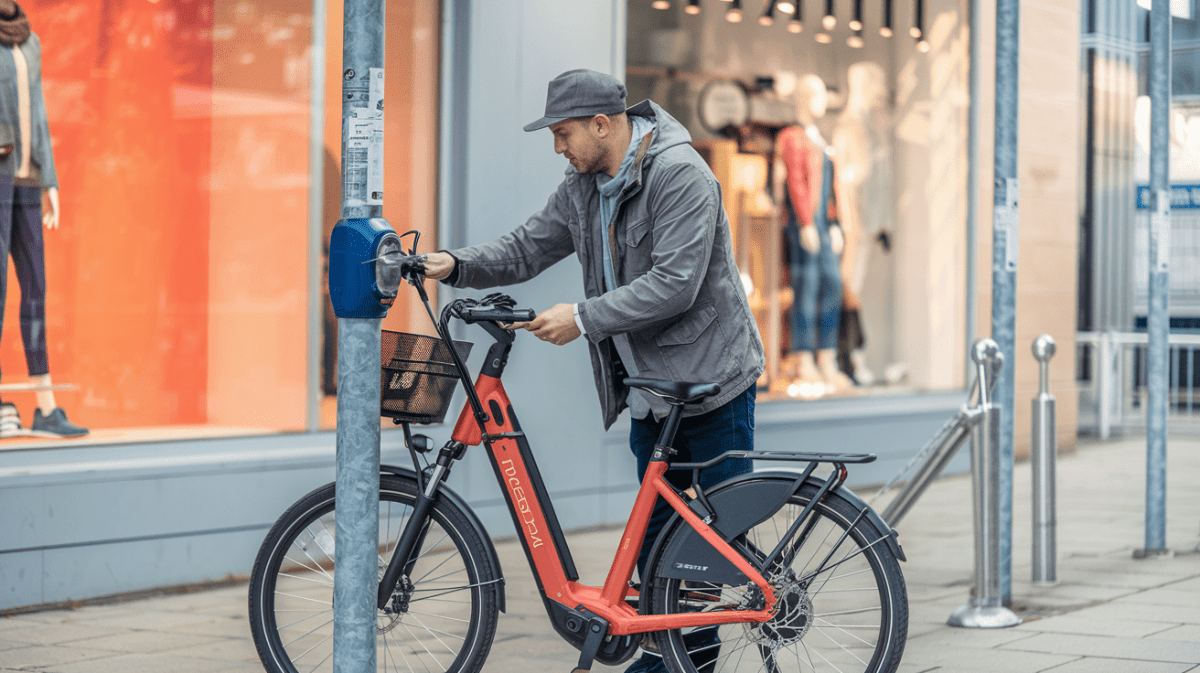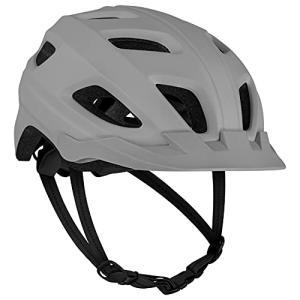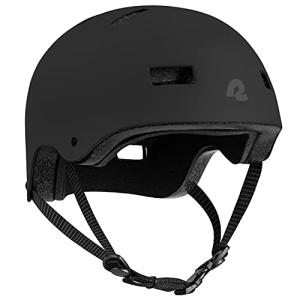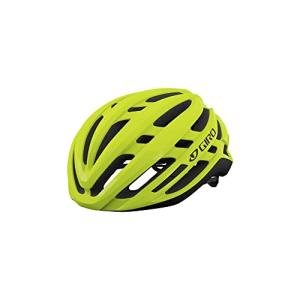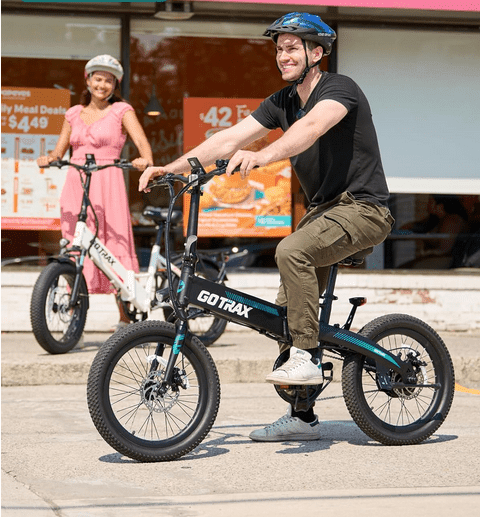Looking to keep your electric bike safe and secure? Choosing the right bike lock is an essential step in protecting your investment. With so many options available, it can be challenging to determine which lock is best suited for your electric ride. In this article, we will explore the three primary types of bike locks available: cable, chain, and U-lock.
Cable locks offer flexibility due to their lightweight and easy-to-use design. They are ideal for low-crime areas and quick pit stops. On the other hand, chain locks provide added security with their durable construction and resistance to cutting tools. They are a popular choice for urban environments and longer stops. Lastly, U-locks are renowned for their high level of security. They are typically heavy and bulky but offer excellent protection against theft.
Whether you're commuting to work or cruising around town, knowing which lock to choose is crucial to safeguarding your electric bike. Join us as we dive into the features, pros, and cons of each lock type, helping you make an informed decision on the best locking solution for your electric ride.
The importance of choosing the right bike lock
When you invest in an electric bike, you're not just purchasing a mode of transportation; you're acquiring a valuable asset that deserves protection. The right bike lock is a critical component of that protection strategy. With electric bikes becoming increasingly popular, the risk of theft has also risen, making it essential to choose a lock that offers adequate security while fitting your lifestyle and usage patterns. A good lock can deter thieves and safeguard your investment, ensuring that you can enjoy your rides without constant worry.
Selecting the appropriate lock requires an understanding of your environment and how you plan to use your electric bike. For instance, if you frequently park in high-crime areas, a more robust lock will be necessary. Conversely, if your bike rides are primarily in low-risk zones or if you often make quick stops, a lighter, more portable option may suffice. Understanding the various types of locks available and their respective advantages and disadvantages will help you make an informed decision that aligns with your needs.
In addition to security, the ease of use is another critical factor when selecting a bike lock. A lock that is cumbersome or complicated to operate might discourage you from securing your bike properly. The last thing you want is to be in a rush and find yourself wrestling with a lock that doesn’t easily fit into your routine. Therefore, finding a balance between security, convenience, and weight is vital in choosing the right bike lock for your electric ride.
Cable locks: Pros and cons
Cable locks are among the most popular types of bike locks available, largely due to their flexibility and lightweight design. They consist of a long, flexible cable that can be looped around your bike frame and a fixed object, such as a bike rack, making it easy to secure your ride. One of the significant advantages of cable locks is their portability; they are often lightweight and can be easily carried in a bag or attached to the bike frame. This makes them an excellent option for short, quick trips where convenience is paramount.
However, cable locks come with their set of drawbacks. While they offer a degree of security, they are generally not as robust against theft as other types of locks. Thieves can easily cut through most cable locks with simple tools like bolt cutters, rendering them less effective in high-crime areas. Therefore, cable locks are best suited for low-risk environments where the likelihood of theft is minimal. If you frequently leave your bike unattended for extended periods or in busy urban settings, a cable lock may not provide the protection you need.
In summary, cable locks are a convenient and portable option ideal for quick stops and low-crime areas. They are perfect for those who prioritize lightweight design and flexibility. However, if you find yourself in higher-risk situations, you may want to consider additional security measures or opt for a more secure locking solution to keep your electric bike safe.
Chain locks: Pros and cons
Chain locks provide a more secure option for those looking to protect their electric bikes, especially in urban environments. Made from thick, durable links, chain locks are typically much harder to cut through compared to cable locks. This construction allows for a greater sense of security, as they can resist various theft attempts. Chain locks often come with a padlock mechanism, which adds another layer of security, making it difficult for thieves to access your bike.
One of the main advantages of chain locks is their versatility. The length of the chains allows you to secure your bike to various objects, providing flexibility in how and where you lock your bike. This can be particularly useful in crowded areas where finding a suitable anchor point might be tricky. Additionally, many chain locks come with protective covers that prevent scratching your bike’s frame while locking it up. However, despite their benefits, chain locks do have some downsides.
The primary disadvantage of chain locks is their weight; they can be significantly heavier than cable locks, making them less portable. Carrying a chain lock on your bike for extended periods may become cumbersome, especially on longer rides or commutes. Furthermore, while they offer great security, they can be more expensive than cable locks. Therefore, if you often leave your bike in high-risk areas for long periods, the added security may justify the cost and weight. Overall, chain locks are an excellent choice for those prioritizing security over portability.
U-locks: Pros and cons
U-locks, also known as D-locks, are considered one of the most secure options available for protecting your electric bike. Their solid construction and design make it extremely difficult for thieves to break or cut through them. U-locks typically consist of a steel shackle that forms a "U" shape, allowing you to secure your bike frame and wheel to a fixed object. This type of lock is particularly effective in urban settings where theft is a significant concern and is often regarded as the gold standard for bike security.
One of the standout features of U-locks is their resistance to various theft methods, including leverage attacks and cutting. Their rigidity makes it challenging for thieves to manipulate them without specialized tools. Many U-locks also come with additional features, such as anti-theft alarms or locks that are resistant to picking. These added features can provide peace of mind, especially when leaving your bike unattended for extended periods. However, this level of security does come with some trade-offs.
Despite their impressive security, U-locks have a few notable disadvantages. They tend to be heavier and bulkier than cable or chain locks, which can be inconvenient for everyday use. Carrying a U-lock on a bike might require a dedicated mount or bag, and some riders may find it cumbersome, particularly on longer rides. Additionally, while U-locks offer excellent security for the bike frame, they may not adequately secure both wheels unless you invest in a second lock. This limitation sometimes leads to the need for additional locks, increasing the overall cost and weight of your locking system.
In summary, U-locks are an outstanding choice for those prioritizing security, particularly in areas with a high risk of theft. Their solid construction and resistance to tampering make them a reliable option for protecting your electric bike. However, potential buyers should consider their weight and bulkiness, as well as the necessity of additional locks for complete protection.
Factors to consider when choosing a bike lock
When it comes to selecting the right bike lock for your electric ride, several factors should be taken into account to ensure that you make the best choice for your needs. First and foremost, consider the level of security you require. The area where you typically park your bike plays a significant role in determining the risk of theft. If you often find yourself in high-crime neighborhoods, investing in a more robust lock, such as a U-lock or a chain lock, is prudent. Conversely, if you mostly ride in low-risk areas, a cable lock may suffice.
Another critical factor to consider is the weight and portability of the lock. If you plan on carrying the lock with you during your rides, a lightweight and compact option may be preferable. Cable locks excel in this area due to their lightweight design, while U-locks and chain locks can become cumbersome. Assess how you will transport the lock and whether it will fit into your daily routine without becoming a burden. Additionally, look for features such as mounting options or carrying bags that can simplify the process of transporting your chosen lock.
Lastly, consider the cost associated with different types of locks. While it's tempting to choose the cheapest option available, investing in a higher-quality lock can save you money in the long run by preventing theft. Look for locks that offer a balance between security and price. Additionally, read reviews and consider the warranty or guarantee provided by the manufacturer, as these can be indicators of the lock's reliability and effectiveness. By carefully considering these factors, you can choose a lock that aligns with your security needs and lifestyle.
Best bike locks for electric rides
Selecting the best bike lock for your electric ride involves examining specific models that are highly rated for their security, durability, and user-friendliness. One of the top contenders in the U-lock category is the Kryptonite New York Fahgettaboudit Mini. This lock is known for its impressive security features, including a 18mm hardened steel shackle and a double deadbolt design. Though it is on the heavier side, its unmatched strength makes it an excellent choice for urban riders who need dependable theft protection.
For those considering a chain lock, the Abus Granit CityChain X-Plus 1060 is a standout option. This chain lock is made from hardened steel and features a robust link design that resists cutting and tampering. It comes with a protective cover to prevent scratches and is available in various lengths, allowing users to choose the best fit for their locking needs. While it might be heavier than a cable lock, the level of security it provides makes it an attractive option for serious cyclists.
If you're leaning towards a cable lock for its lightweight and flexible design, the OnGuard Bulldog Mini U-Lock is worth considering. While it may not offer the same level of security as the U-lock or chain lock options, it strikes a balance between convenience and protection, making it suitable for quick trips in low-crime areas. Additionally, it features a protective vinyl coating to prevent damage to your bike's frame. Ultimately, the best bike lock for your electric ride will depend on your specific needs, environment, and budget.
Tips for using bike locks effectively
Using a bike lock effectively is just as important as choosing the right one. To maximize your electric bike's safety, it is crucial to lock it correctly. Start by securing both the frame and one wheel to a solid, immovable object. This minimizes the risk of thieves simply lifting your bike onto a vehicle or removing the front wheel and leaving the frame behind. For U-locks, ensure that the lock is positioned in a way that prevents leverage attacks, and for chain locks, use a shorter chain to limit the wiggle room.
Another essential tip is to lock your bike in well-lit, high-traffic areas whenever possible. Thieves are less likely to attempt a theft in locations where they can be easily seen or where there are many witnesses around. If you can, find a dedicated bike rack or an area specifically designed for bike parking. Additionally, avoid locking your bike to objects that can be easily cut or broken, such as flimsy fences or thin poles. Always scan your surroundings and choose a locking location that maximizes visibility and security.
Regularly inspect and maintain your lock to ensure its functionality. Check for signs of wear and tear, rust, or any mechanisms that may not operate smoothly. Keeping your lock clean and well-lubricated will help it last longer and function more effectively. If you notice any issues, consider replacing the lock promptly to avoid compromising your bike's security. By following these tips, you can enhance the effectiveness of your bike lock and significantly reduce the risk of theft.
Bike lock maintenance and care
Maintaining your bike lock is crucial to ensure its longevity and effectiveness in protecting your electric ride. Regular care can prevent rust, corrosion, and mechanical failures that may compromise the lock's security. Start by cleaning your lock periodically with a damp cloth to remove dirt, grime, and moisture. Pay special attention to the locking mechanism, as dirt buildup can hinder its operation. Avoid using harsh chemicals that could damage the lock's finish, and instead opt for mild soap and water.
Additionally, lubricating the lock is essential for maintaining its functionality. Use a lubricant specifically designed for locks, such as graphite powder or a silicone-based spray, to prevent sticking and ensure smooth operation. Apply the lubricant to the keyhole and the locking mechanism, allowing it to penetrate any moving parts. Regular lubrication will help protect the lock from moisture and rust, keeping it in optimal working condition.
Lastly, store your lock in a dry and secure location when not in use. Avoid leaving it in damp areas, as moisture can lead to corrosion. If the lock comes with a protective cover or case, use it to shield it from the elements when transporting it on your bike. By following these maintenance tips, you can extend the life of your bike lock and ensure that it remains a reliable defense against theft.
Conclusion: Choosing the right bike lock for your electric ride
Choosing the right bike lock for your electric ride is a crucial decision that can significantly impact the security of your investment. The various lock types—cable, chain, and U-lock—each offer distinct advantages and disadvantages, making it essential to weigh these factors against your specific needs and circumstances. Whether you prioritize portability, security, or ease of use, understanding the nuances of each lock type will empower you to make an informed choice.
Consider your riding habits, the environments where you typically park your bike, and the level of security you require. A combination of different locks may also be necessary for those who frequently travel between various locations, allowing you to adapt your security measures to suit different risk levels. Ultimately, investing in a high-quality lock that aligns with your lifestyle can provide peace of mind and protect your electric bike from potential theft.
By following the tips and maintenance advice outlined in this article, you can ensure that your chosen lock remains effective and functional for years to come. Remember, a bike lock is not just a precaution; it is a vital part of your overall biking experience, allowing you to focus on enjoying the ride rather than worrying about your bike's safety. So gear up, lock up, and ride confidently knowing that you've taken the right steps to protect your electric ride.
DISCLAIMER
This document is provided for general information purposes only and should not be relied upon as providing legal advice, technical, or specific operational guidance to the reader, whether as to the practices described in the document or the applicable legal requirements and regulations. justelectricbikes.com expressly disclaims any responsibility for liability arising from or related to the use or misuse of any information in this document.
